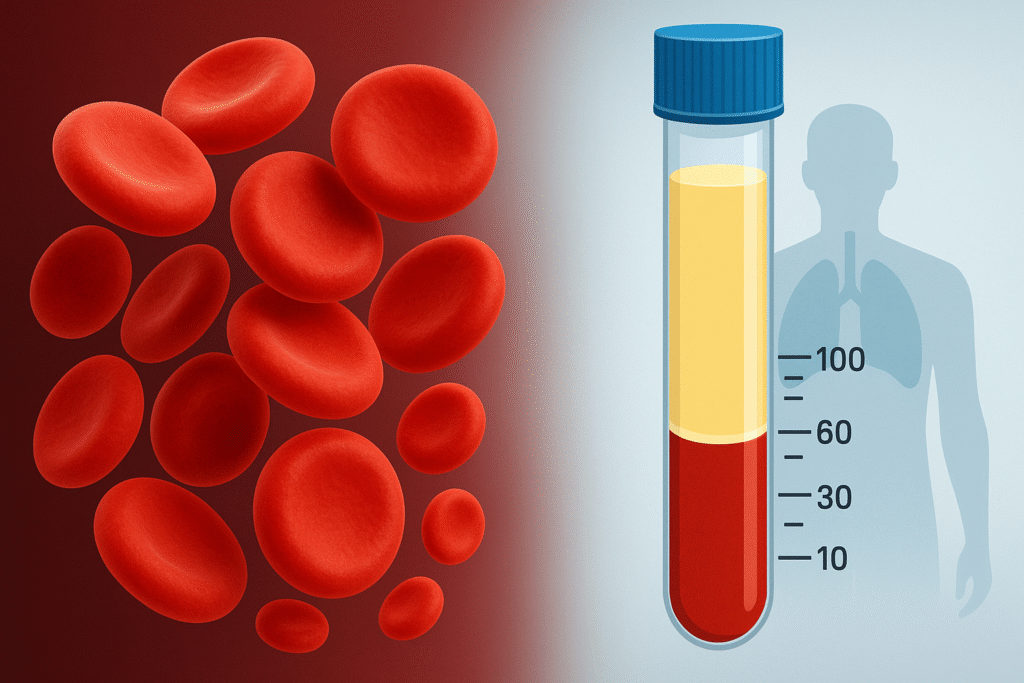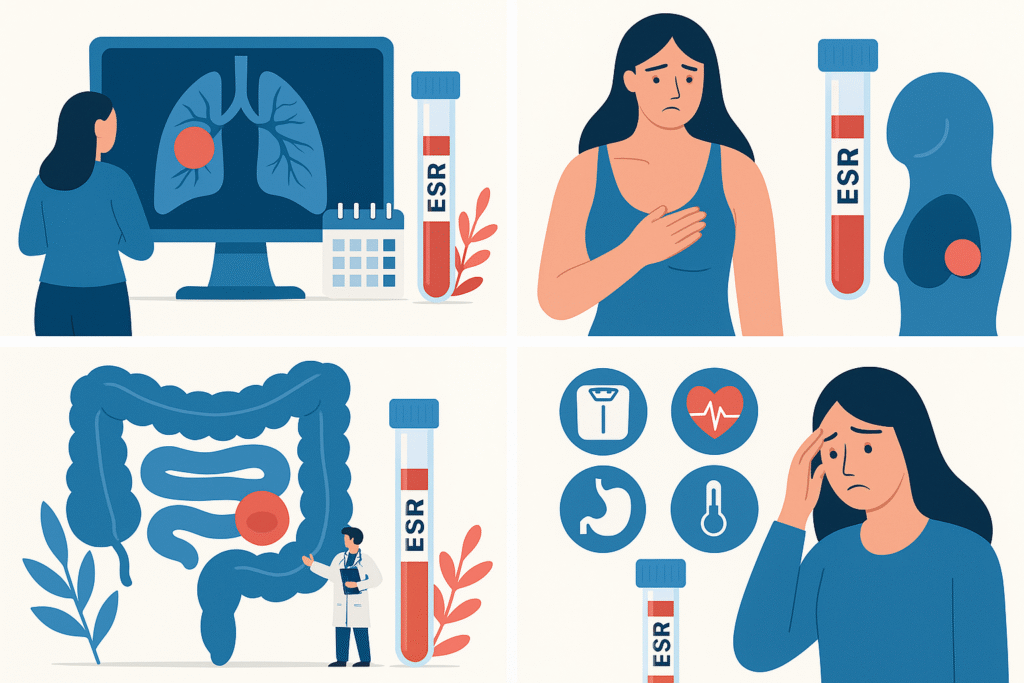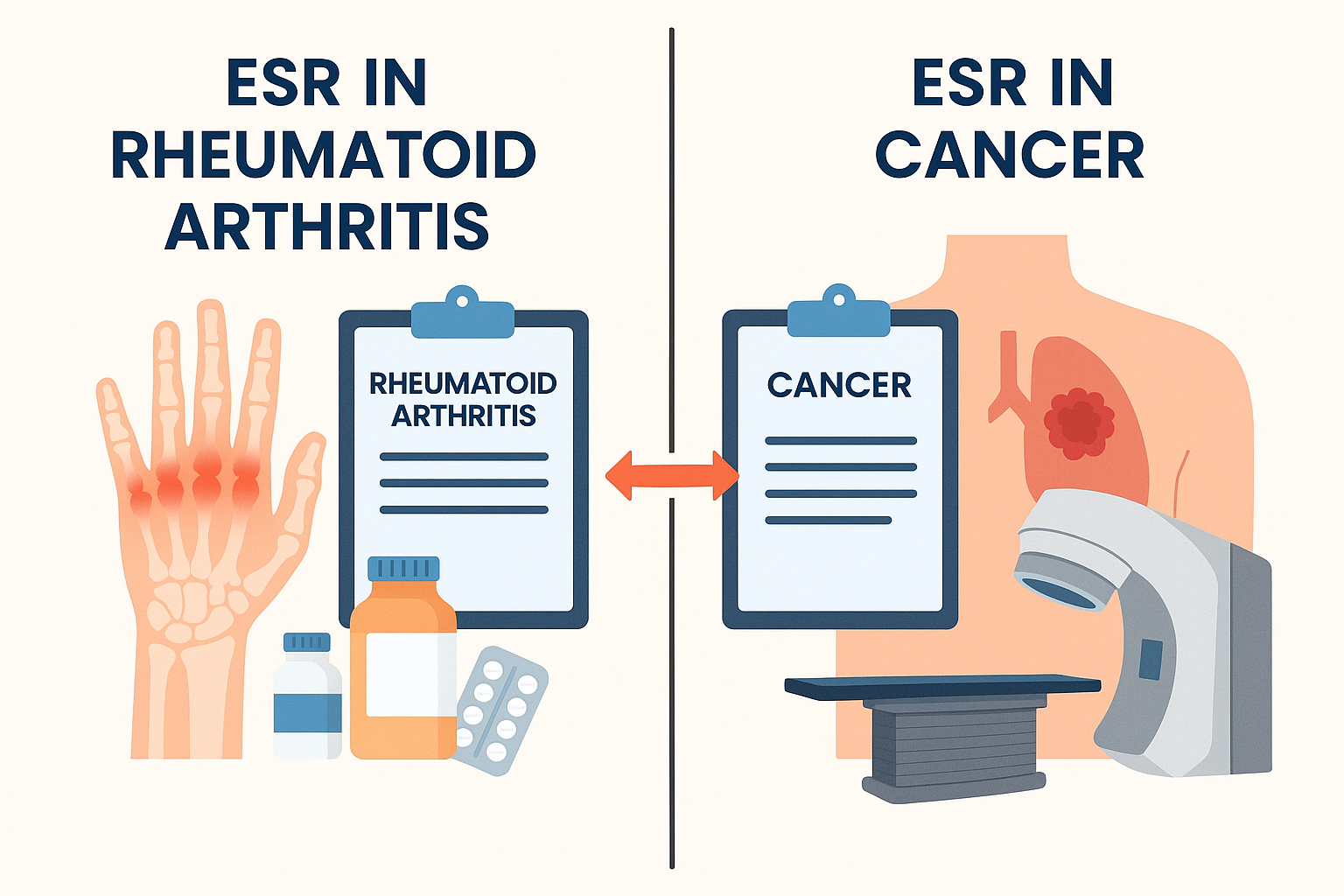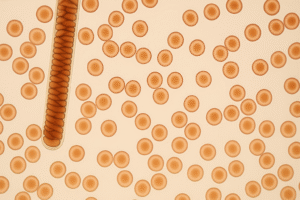When it comes to diagnosing or tracking serious health conditions like cancer, many people come across the term ESR in their blood test reports. ESR stands for Erythrocyte Sedimentation Rate — and while it’s not specific to any one disease, it can offer valuable clues to doctors, especially in the context of inflammation, infection, autoimmune disorders, and cancer.
So, what is the ESR level in cancer patients, and why should you or your loved ones pay attention to it? In this blog by Shaman Cancer Care, we break down the science behind ESR, its relevance in cancer diagnosis, and what you need to know if your ESR is high.
What Is ESR?
Red blood cells’ sedimentation rate after an hour is measured with ESR (Erythrocyte Sedimentation Rate).
- Normally, RBCs settle slowly.
- But when there’s inflammation in the body — due to infections, autoimmune diseases, or cancer — certain proteins make the RBCs stick together and settle faster.
ESRs that are higher than normal indicate inflammation in the body. However, ESR is not specific — it doesn’t tell you the exact cause, just that something is wrong.

What Is the ESR Level in Cancer Patients?
ESRs are frequently elevated in cancer patients because of the tumor or the body’s immune response to the cancer, or because the cancer has spread (metastasized).
- Typical ESR in a healthy adult:
- Men: 0–15 mm/hr
- Women: 0–20 mm/hr
- ESR in cancer patients may range from 30 to 100+ mm/hr, depending on:
- Type of cancer
- Stage of cancer
- Presence of infection or inflammation
- Response to treatment
At Shaman Cancer Care, we monitor ESR as part of a broader diagnostic and treatment plan. An isolated high ESR is never used to confirm cancer, but it can act as a supportive marker when combined with scans, biopsies, and other tests.

ESR Level in Lung Cancer
ESR level in lung cancer is typically elevated, especially in advanced stages.
- Lung tumors can trigger strong inflammatory responses.
- If accompanied by chronic cough, chest pain, or weight loss, a high ESR may raise suspicion.
- ESR can also be useful in monitoring treatment response.
ESR Level in Breast Cancer
In breast cancer patients, particularly with advanced disease, ESR can shoot up beyond 50 mm/hr.
- An unusually high ESR, along with a breast lump or skin dimpling, can point toward further investigation.
- A falling ESR can indicate that a treatment has been successful after surgery or chemotherapy.
ESR Level in Colon Cancer
ESR level in colon cancer may be elevated even before any symptoms appear.
- Symptoms like blood in stools, abdominal pain, or anemia combined with high ESR call for immediate colonoscopy and scans.
- A study found ESR levels >50 mm/hr were significantly associated with advanced-stage colorectal cancer.
Does High ESR Mean Cancer?
Not always.
High ESR ≠ Cancer by default.
There are many other causes of high ESR:
- Infections (e.g. TB, pneumonia)
- Autoimmune diseases (e.g. lupus, rheumatoid arthritis)
- Kidney disease
- Anemia
- Even pregnancy or aging can cause a mild rise
But a persistently high ESR without obvious reason must be evaluated, especially if accompanied by cancer symptoms like:
- Unexplained weight loss
- Fatigue
- Loss of appetite
- Persistent pain
- Fever of unknown origin
High ESR Symptoms
ESR itself doesn’t cause symptoms — but the underlying disease responsible for high ESR does.
Common symptoms associated with high ESR in cancer:
- Persistent fatigue
- Low-grade fever
- Loss of weight or appetite
- Night sweats
- Pain or swelling (depending on tumor location)
At Shaman Cancer Care, we always ask: “Why is the ESR high?” rather than panic about the number itself. We dig deeper using imaging (CT, MRI), biopsy, and tumor markers.

ESR in Rheumatoid Arthritis vs Cancer
Many people confuse rheumatoid arthritis (RA) with cancer due to overlapping inflammation.
- In RA, ESR can also be very high (up to 100 mm/hr), especially during flares.
- The difference lies in symptoms:
- RA: joint pain, stiffness, swelling
- Cancer: localized or systemic symptoms like lumps, bleeding, or chronic fatigue
- RA: joint pain, stiffness, swelling
What is the ESR level in rheumatoid arthritis?
Often above 40–60 mm/hr during active inflammation.
So again, context and symptoms matter.
What Is the ESR Level in Cancer Patients in Hindi?
If you’re searching this topic in Hindi, here’s a quick translation:
कैंसर मरीजों में ईएसआर का स्तर क्या होता है?
कैंसर के मरीजों में ईएसआर सामान्य से अधिक हो सकता है (30 से 100 मिमी/घंटा तक)। यह शरीर में सूजन या कैंसर की गंभीरता को दर्शा सकता है। हालांकि, सिर्फ ईएसआर से कैंसर का पता नहीं लगाया जा सकता।
At Shaman Cancer Care, we also provide multilingual support and detailed explanation in Hindi, Marathi, and English to help families understand reports with clarity.
When Should You Be Concerned About High ESR?
High ESR is a signal, not a diagnosis.
Visit a doctor if you have:
- ESR > 50 mm/hr consistently
- No clear infection or arthritis
- Other unexplained symptoms
- A personal or family history of cancer
Taking a closer look at ESR: It is not a conclusion, rather a clue
To summarize the question — what is the ESR level in cancer patients?
It’s typically higher than normal, often 30–100+ mm/hr, but varies by cancer type and stage.
At Shaman Cancer Care, we use ESR as one of many tools in our comprehensive cancer evaluation system — along with scans, blood markers, biopsy, and genetic testing.
FAQ
No. An ESR test cannot diagnose cancer alone due to its non-specific nature.
Most of the time yes, especially in advanced stages, but some early-stage or low-grade cancers may show normal ESR.
Follow up with a doctor. You may need imaging or further lab tests to rule out serious issues.
Yes! A drop in ESR can be a good sign that the treatment is working or inflammation is reducing.







